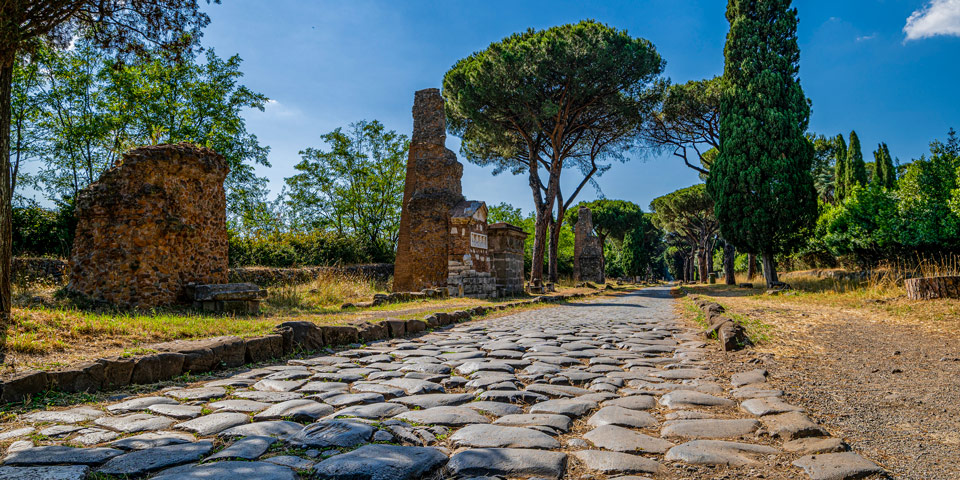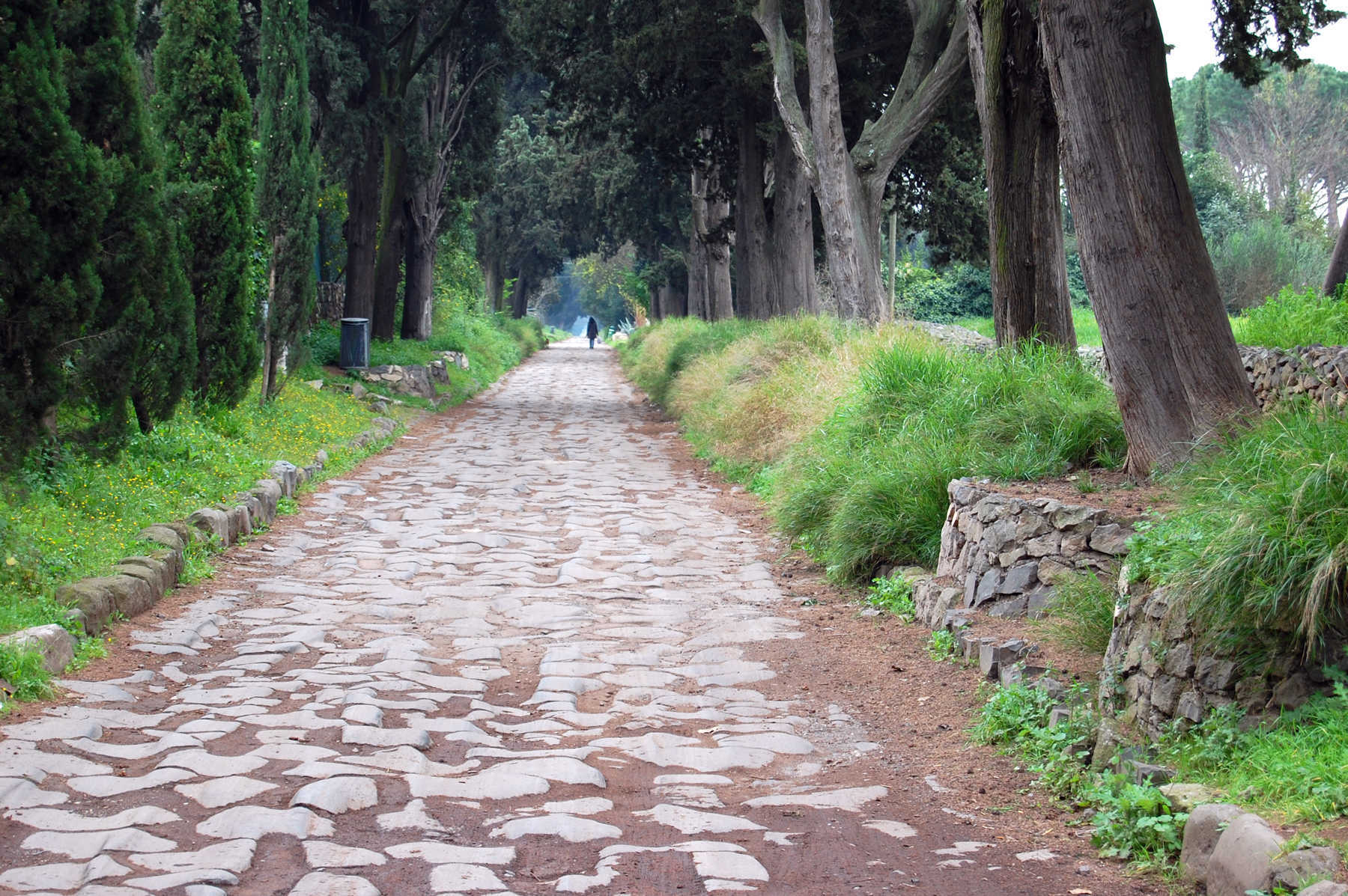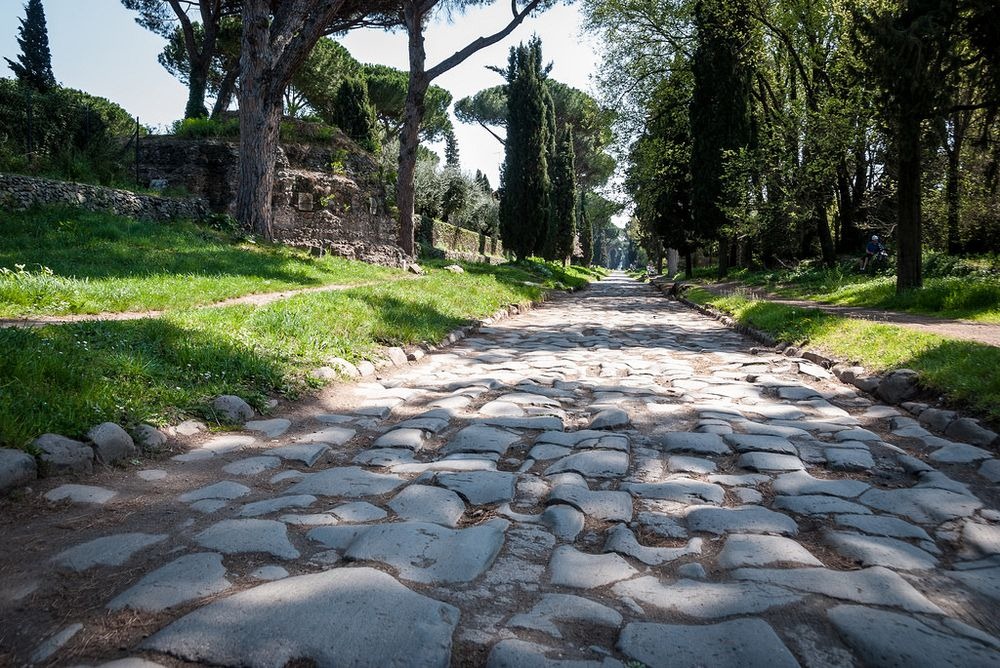Introduction
The Appian Way, or Via Appia, is one of the most famous roads in the ancient world, embodying the engineering excellence and strategic prowess of the Roman Empire. This monumental route, constructed in 312 BC under the supervision of Roman censor Appius Claudius Caecus, played a crucial role in the empire’s expansion and consolidation of power. Stretching over 660 kilometers, it connected Rome to the southern parts of Italy, showcasing the vast infrastructure network that became a hallmark of Roman influence.
Historical Context
Military and Strategic Importance
Initially constructed for military purposes, the Appian Way allowed for the rapid movement of Roman legions across Italy, particularly during the Samnite Wars. Rome’s ability to efficiently deploy soldiers to its southern territories was critical to securing its dominance over Italy. The road also ensured smooth logistical support, making it easier for the army to transport supplies and reinforcements as they pushed southward.

The military significance of the Appian Way, however, soon extended beyond its original function. As Rome’s territory expanded, the road became a vital artery for trade, diplomacy, and communication, connecting the capital with its far-flung provinces and ensuring the flow of resources and information necessary to maintain an empire of such scale.
Engineering Mastery
Construction Techniques
The Appian Way was a testament to the Romans’ advanced engineering skills. The road was meticulously constructed using layers of stone, gravel, and sand to create a durable surface. The Roman engineers began by digging a trench, laying large stones for stability, followed by smaller rocks and gravel to form the roadbed. Finally, the surface was covered with tightly fitted basalt stones that formed a smooth, long-lasting roadway.

Its width, designed to accommodate two chariots passing each other, or five soldiers marching abreast, further illustrated the foresight in planning for both military and civilian use. This durable road stood as a model for future Roman roads, some of which remain functional even today.
Longevity and Legacy
The Appian Way’s robust construction allowed it to endure for centuries, with many parts still in use today. Unlike most ancient roads that succumbed to the elements, the Appian Way’s design ensured its surface could handle heavy traffic and remain relatively intact over time. Its longevity underscores the importance the Romans placed on durability in their infrastructure projects, ensuring that their roads served not only immediate needs but also future generations.
The Cultural and Economic Impact
Trade and Commerce
As the Roman Empire grew, the Appian Way became more than a military road; it evolved into a crucial commercial route. Merchants from all over the empire used it to transport goods such as grain, wine, and olive oil between Rome and the southern regions, including ports on the Adriatic Sea. The road’s eastern terminus at Brindisi, a key port city, facilitated maritime trade with Greece, Egypt, and beyond, linking Rome with the wider Mediterranean economy.

This network of roads, of which the Appian Way was a cornerstone, allowed Rome to exert control over its far-reaching empire, ensuring efficient transportation of goods, people, and ideas. It played a key role in the urbanization of the Roman Empire, helping cities thrive as economic and cultural centers.
Symbol of Rome’s Power
The phrase “All roads lead to Rome” is a direct reflection of the empire’s vast road network, with the Appian Way often regarded as the most important among them. The road symbolized Roman authority and connectivity, ensuring that distant provinces could be easily reached and governed. It reinforced the centrality of Rome in the ancient world, acting as a metaphorical and literal bridge between different parts of the empire.

Beyond its functional use, the road also held a symbolic meaning. Emperors and generals would often traverse the Appian Way during triumphal processions, parading their victories and displaying the might of Rome to both citizens and foreigners. The road, thus, became a stage for celebrating Roman achievements and instilling pride in the empire.
Conclusion
The Appian Way remains an enduring symbol of Roman ingenuity and power. Its construction, initiated in 312 BC, marked the beginning of a network that would span 322,000 kilometers and serve as the backbone of the Roman Empire. Designed to withstand the test of time, this road not only played a pivotal role in military strategy but also facilitated commerce, communication, and cultural exchange across the empire.
Even today, the Appian Way stands as a tribute to the enduring legacy of Roman engineering and ambition. It reminds us of the remarkable foresight of the Romans, whose roads laid the foundation for the interconnected world of their time, creating the infrastructure upon which the empire’s success was built.

